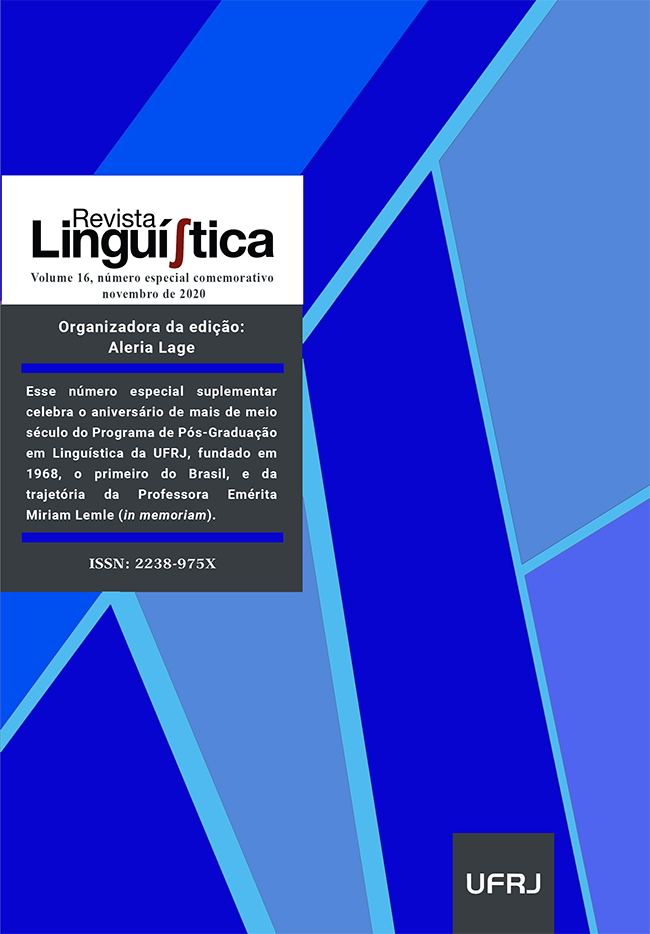Look reading course of photography by eye tracking
DOI:
https://doi.org/10.31513/linguistica.2020.v16nEsp.a43734Keywords:
Look reading course. Image. Sense of the look.Abstract
Through an unprecedented experiment on “Image reading by eye tracking”, we studied the reading of syncretic multimodality as an object of study. Specifically, we investigated polysemy and polychromy as semantic phenomena of visual perception. In a situation of reading digital photography from a Brazilian advertising magazine (G Magazine), Brazilian university readers performed eye movements, building course for reading the gaze, with effects of (in) order of the image and meanings of the gaze (reading gestures). The justification for choosing such data from a specific group (heterosexual men) is based on the average answer “yes”, in relation to the question “Is there nudity in the image?” (found on the last slide of the experiment), if it presents itself differently from the “no” answers of the other five participating groups (homosexual and bisexual men, homosexual, bisexual and heterosexual women). Also by the heat map and ‘p’ value of this group, heterosexual men indicate pairwise comparisons, in relation to the areas of interest: underwear of the right model, face-wig-bust of the drag queen, face of Dicesar, sandal of the drag queen, face of right model. The analysis proposal shares theoretical knowledge of the various facets of the ‘construal’ (building of meaning, Ferrari, 2016; Ferrari et. al., 2017) and of the semantic-discursive relationship (Pêcheux, 1982, 1983, 1984; Souza, 2000, 2001, 2011 , 2013, 2018; Nascimento, 2015, 2017, 2018, 2019a, 2019b) in visual perception of reading digital photography of advertising cover, from an erotic magazine. The authors invest in the interpretation that ensures the elaboration of the answer “Yes” or “No” in the face of the question proposed in the image reading experiment.
Downloads
Published
Issue
Section
License
Authors who publish in the Revista Linguí∫tica agree with the following terms:
The authors maintain their rights, ceding to the journal the right to first publication of the article, simultaneously submitted to a Creative Commons license permitting the sharing with third-parties of published content as long as it mentions the author and its first publication in the Revista Linguí∫tica.
Authors may enter into additional agreements for the non-exclusive distribution of their published work (for example, posting in online institutional or non-profit repositories, or book chapters) so long as they acknowledge its initial publication in the Revista Linguí∫tica.

The journal Revista Linguí∫tica is published by the Post-Graduate program in Linguistics of UFRJ and employs a Creative Commons - Attribution-NonCommercial 4.0 International (CC-BY-NC).









